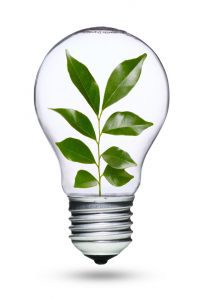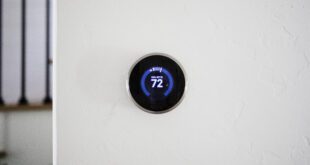By Elisa Wood
March 8, 2012
 US Congresswoman Michele Bachmann often asks why government should tell us which kind of light bulb to choose. Turns out it’s a question with a trillion dollar answer.
US Congresswoman Michele Bachmann often asks why government should tell us which kind of light bulb to choose. Turns out it’s a question with a trillion dollar answer.
We will save $1.1 trillion through 2035 because of existing energy efficiency mandates for light bulbs and appliances, according to a report issued this week by the American Council for an Energy-Efficient Economy and the Appliance Standards Awareness Project.
“The Efficiency Boom: Cashing In on the Savings from Appliance Standards” says the standards will cut our energy use 200 quads, the equivalent of the US using no energy for two years. The standards already have reduced our energy use 3.5 percent.
This means lighting and appliance standards have saved more energy than almost any other efficiency program, says the report.
Bringing the numbers close to home, the average household will save about $30,000 over 45 years, or enough to cover two years of typical mortgage payments, under existing and new standards. This assumes the household changes major appliances every 15 years.
It’s important to note that Bachmann’s assertion – that the government is choosing light bulbs – is an oversimplification. The standards do not mandate any particular kind of lights, but call for manufacturers to achieve a certain level of energy efficiency. True, an old technology may not make the cut. Oddly, though, no one seems worried about losing access to inefficient air conditioners, computers or other appliances. Anti-standards folks, like Bachmann, seem attached only to inefficient light bulbs. (This bewilders me.)
US appliance standards go back to 1974 when then-Governor Ronald Reagan signed a bill to bring greater efficiency to major appliances in that state. Other states followed, but the federal government didn’t get on board until 1987. Again it was Reagan, this time as President, who signed the first bill. Additional standards became law under President George Bush and President George W. Bush. Since then, the Department of Energy has further updated standards. About 55 products are covered; not only lighting, but also refrigerators, air conditioners, motors and other appliances.
“Standards have been a bipartisan energy policy success story stretching across four decades and five presidencies,” said Andrew deLaski, executive director of ASAP, a coalition of consumer, environmental and efficiency groups.
The report shows that standards for lighting make a big difference, and will likely continue to do so if new standards are enacted.
“Our research found that a combination of updates for existing standards and first-time standards for products like computers, TV set-top boxes and street lights would add to the track record of big energy, economic and environmental benefits achieved by standards,” said Amanda Lowenberger, lead report author and ACEEE senior research analyst.
Three kinds of lighting make the list of top 10 products that would save the most energy from new standards: incandescent reflector lamps, outdoor light fixtures, and candelabra and intermediate base incandescent lamps.
The bottom line is that because of appliance and lighting standards, we are building fewer power plants. The report estimates that existing standards in 2035 will cut by 18% our peak demand, the maximum amount of power we use at some point in a year, usually hot August days when air conditioners are running full tilt. Peak demand is important because we must build enough power plants to supply all of that energy, although we may reach peak only a few days a year. The rest of the time the excess power plants sit idle. It’s kind of like buying a fleet of extra cars for the few days each summer your relatives visit for a family reunion. Quite an extravagance for a cash-strapped society.
The full report is available at ACEEE’s website
Elisa Wood is a long-time energy writer whose work is available at RealEnergyWriters.com.
 Alternative Energy HQ solar power for homes, wind energy, and bio fuel issues
Alternative Energy HQ solar power for homes, wind energy, and bio fuel issues







